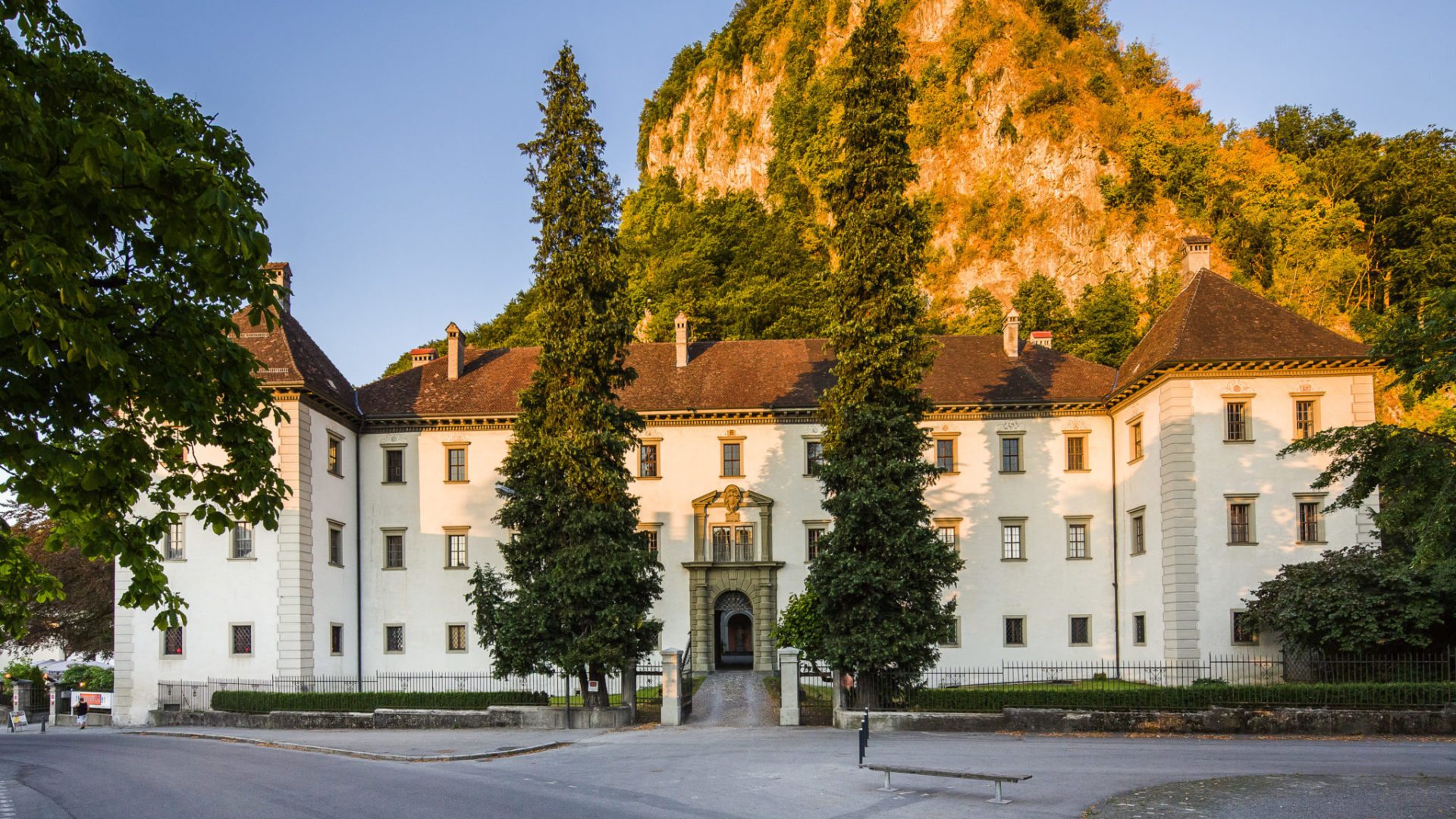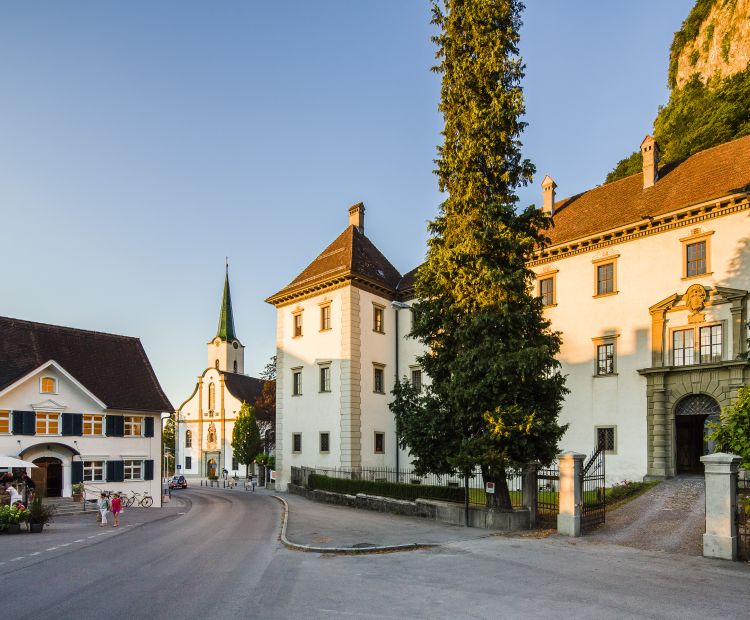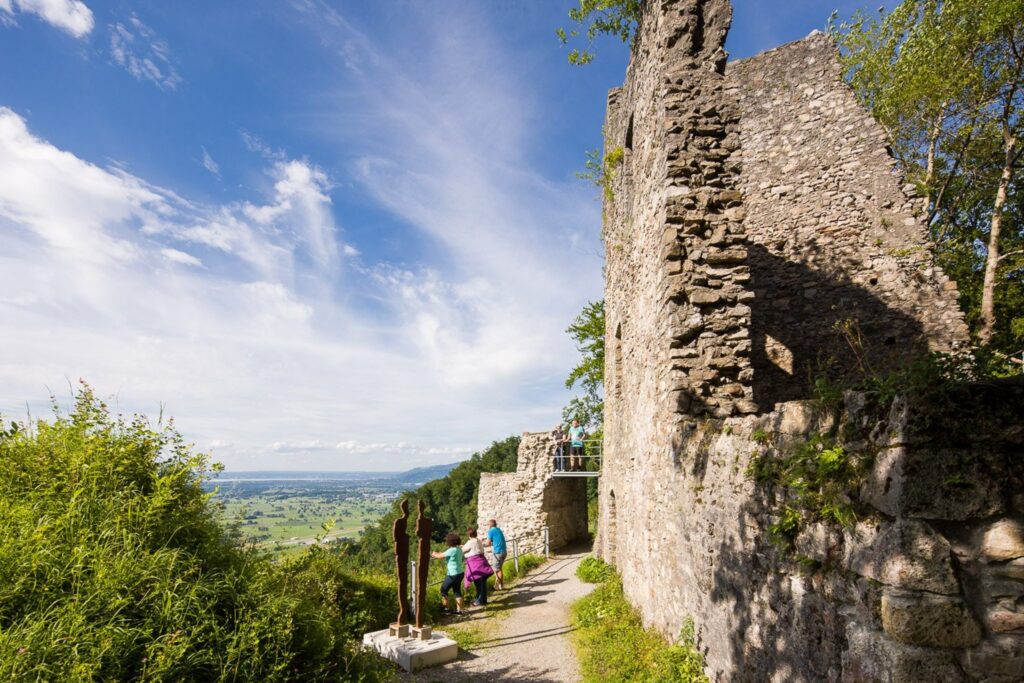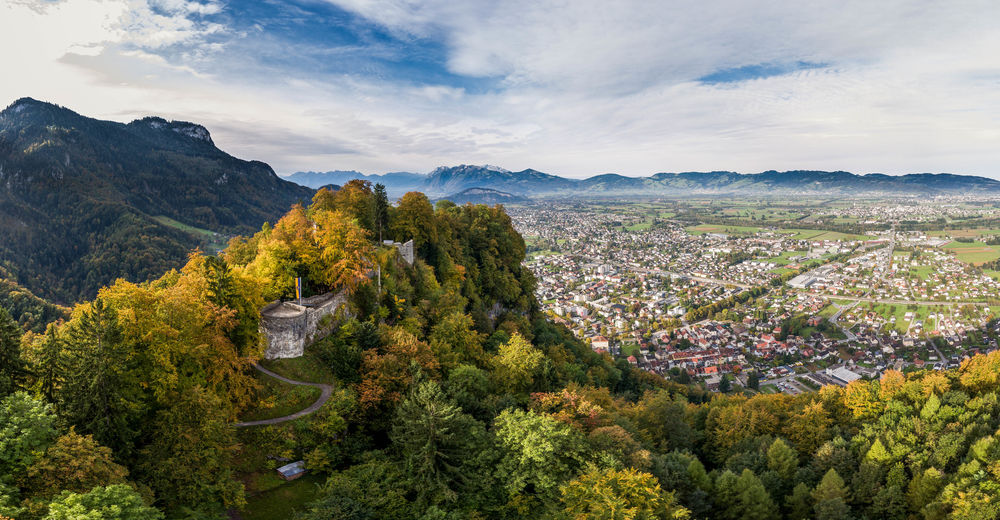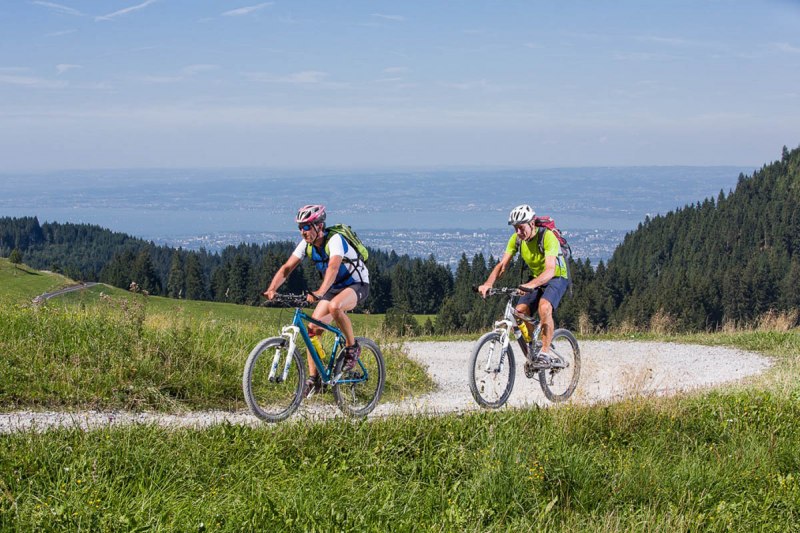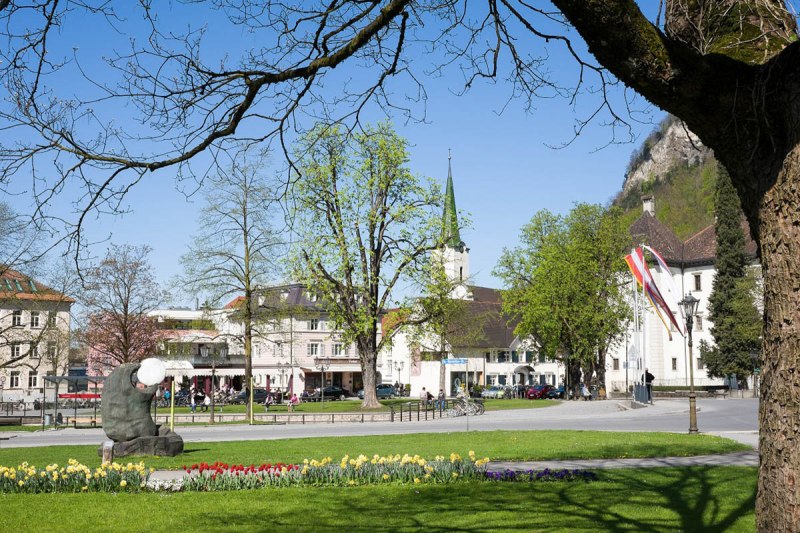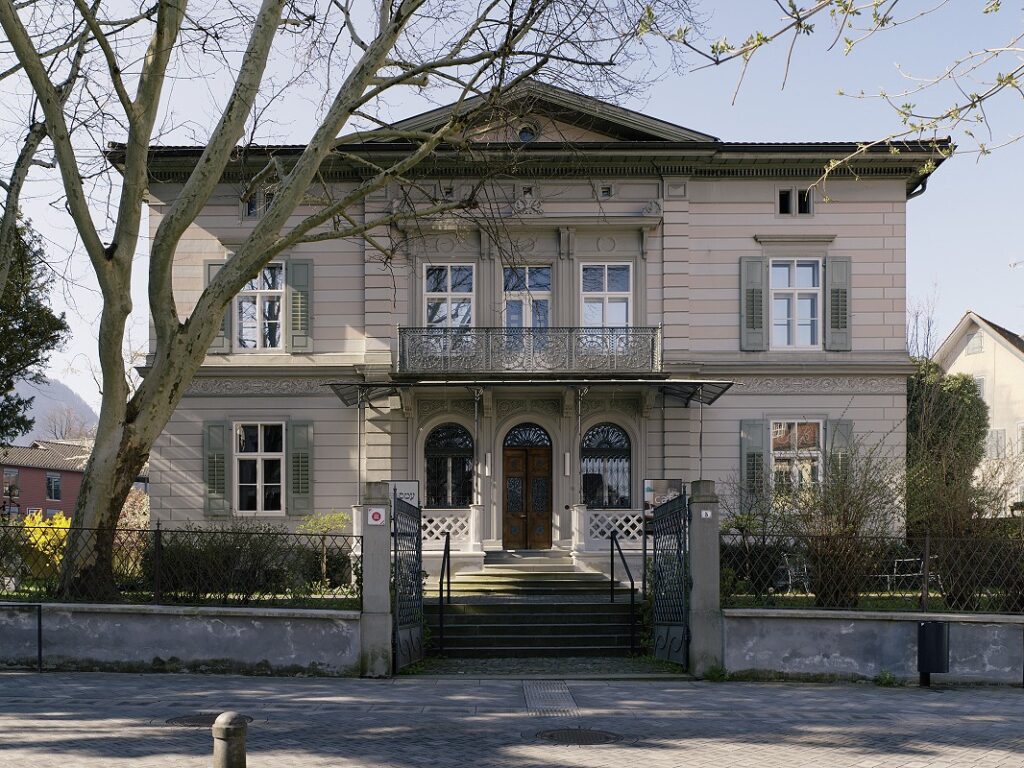Hohenems is a town in the Austrian state of Vorarlberg in the Dornbirn district. It lies in the middle of the Austrian part of the Rhine valley. With a population of 15,200, it is the fifth largest municipality in Vorarlberg. Hohenems’ attractions include a Renaissance palace dating back to the 16th century, a Jewish history museum, and the old town center.
The town is located at 432 metres (1,417 feet) above sea level, about 16 km (10 miles) south of Lake Constance. Hohenems extends for 5.5 km (3.4 mi) from north to south and 8.2 km (5.1 mi) from west to east. Its total area is 29 square kilometres (11 sq mi), of which 42% is covered with forest. The oxbow lake of the river Rhine in the west, forming the border of Austria as well as EU to Switzerland, and the mountainside in the east is at the narrowest point of the Austrian Rhine valley. The Schlossberg (“castle mountain”), elevation 740 metres (2,428 feet), offers a distinctive backdrop to the town center.
Hohenems is divided into the neighborhoods of Markt (centre), Oberklien and Unterklien (north), Hohenems-Reute (east), Schwefel (south) and Herrenried (west). It is surrounded by six other communities, Lustenau and Dornbirn in the Dornbirn district (north and east), Fraxern, Götzis and Altach in the Feldkirch district (south) and Diepoldsau in the Swiss canton St. Gallen (west).
Jewish heritage
The Jewish community in Hohenems had its beginnings with a charter in 1617. Soon thereafter a synagogue, a ritual bath (mikvah), a school and a poorhouse were built. A cemetery was established on the southern outskirts of town. Jewish economic activity in the town resulted in the first coffee house in 1797, and in 1841, the first bank and insurance company in Vorarlberg. The Hohenems Jewish community celebrated its golden era around 1862, with nearly 600 Jewish citizens, 12% of the population. The Jewish presence in town was terminated in 1942 with the deportation of the last remaining Jew, Frieda Nagelberg, to Vienna and eventually to Izbica.[6] Recently three Jewish people have moved into Hohenems.
The synagogue survived the Kristallnacht without damage. It was acquired by the municipality after the war and converted into a fire station. All objects pertaining to its use as a synagogue were removed or destroyed. In 2001 the synagogue was renovated and it now used as a cultural centre.[7] The Jewish quarter, which has had historical preservation status since 1996, includes numerous townhouses and mansions surrounding the synagogue. Along with the former Christengasse (“Christian Lane”), renamed Marktstrasse (Market Street), it forms the urban core of Hohenems.
In 1991, the Jewish Museum Hohenems was opened in a mansion in the center of the Jewish quarter. The museum commemorates the history of the Jewish community in Hohenems. The many remaining objects it exhibits bear witness to the former flourishing Jewish community in Hohenems. As part of its remembrance culture, a section of the museum is dedicated to the memory of the darkest chapter in Vorarlberg history – the national socialist period, and its attempts to eliminate all traces of Jewish culture in Vorarlberg and beyond. The Jewish cemetery south of the town dates to the first Jewish settlement in 1617 and is still in use today. It contains more than 500 graves, with 370 surviving gravestones.
Infrastructure
Apart from the historical sites, the town center is rapidly developing a modest urban ambience, with hotels, shops, and restaurants. On the outskirts of town there are large businesses, with branches of multinational retail chains and a ten-screen multiplex. On the way to the mountain village Reute, high above Hohenems, there is a unique museum – Stoffels Säge-Mühle (“Stoffel’s Sawmill”) – which presents the history of saw milling and mill grinding technologies.
Hohenems has several leisure amenities. In the mountain area there is a small ski resort (Schuttannen) and a rock-climbing area called Löwenzähne (“Lion’s Teeth”) with walls up to 150 m (500 ft) and level 10. There also is a wide range of hiking trails and mountain biking routes nearby. The town boasts of the largest recreational centers (13 hectares) in Vorarlberg,[9] situated on the banks of the river Rhine’s oxbow lake.Altes Krankenhaus (old hospital)
One section of the hospital in Hohenems was originally built in 1908, and has now been totally renovated. Called the Kaiserin-Elisabeth-Krankenhaus (“Empress Elisabeth hospital”), it is a magnificent example of Art Nouveau architecture. It hosts the palliative care unit. The modern General Hospital was built in 1972.
Transport
Two state roads, the Vorarlberger Strasse L190 and the Rheinstrasse L203 cross the municipality from north to south. The L46 leads from the town center to the customs buildings at the border to Switzerland. Hohenems has motorway access to the Rheintal/Walgau-Autobahn (Austrian A14/European route E60) and is on the main west-east route connecting the Vorarlbergbahn railway line in the directions Bregenz and Innsbruck. The train system is operated by the Austrian Federal Railways (ÖBB). The sole airfield in Vorarlberg, with a 630 m (2,066 ft) runway, is located within the municipal borders.
Trivia
Hohenems was one of the locations in the Swiss-Austrian film Akte Grüninger.
The town is the site of the climax of Dennis Wheatley‘s novel about the 1914 outbreak of the First World War, The Second Seal (1950).
